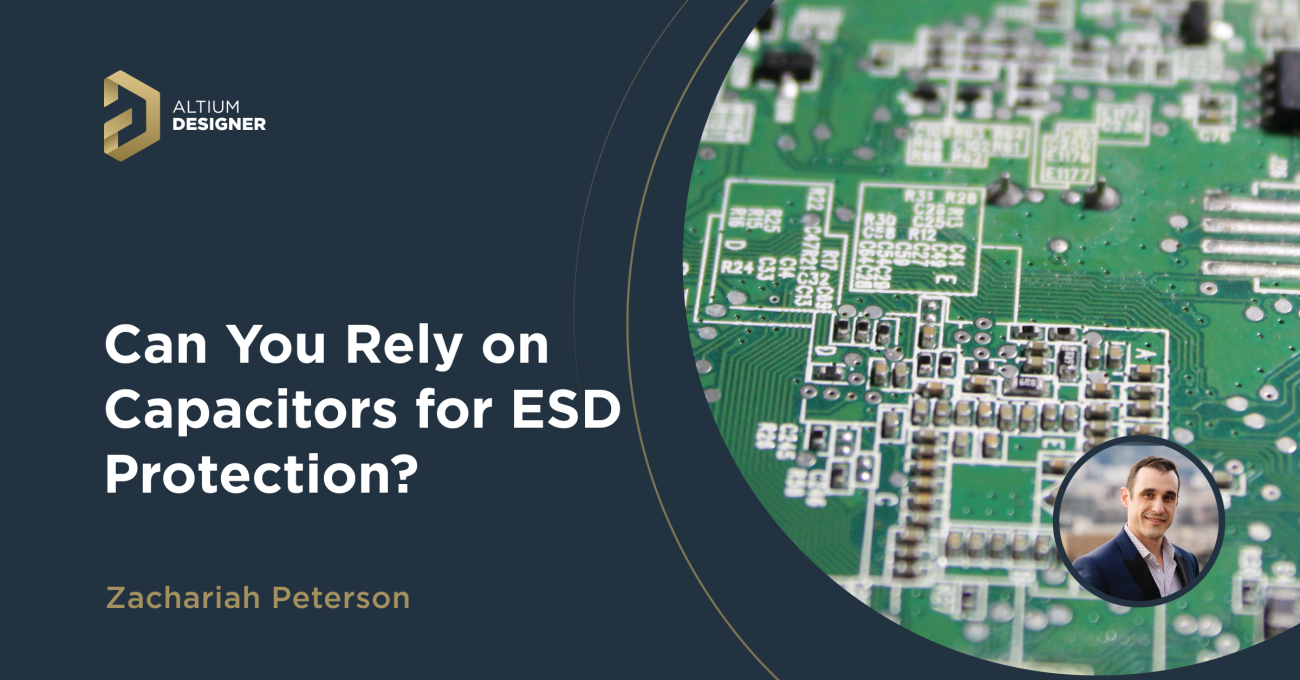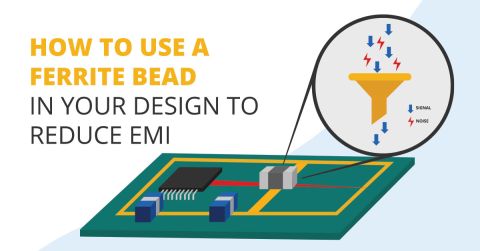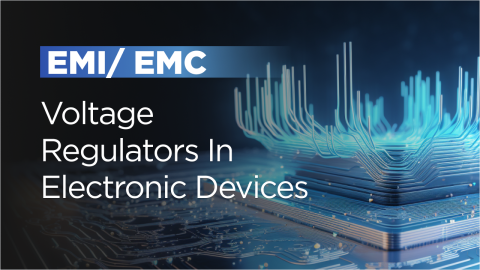Should a Capacitor Be Used For ESD Protection?

I recently saw a LinkedIn post about using capacitors for ESD protection for lines coming from a connector onto a PCB. I was not aware of it, but apparently there is a somewhat popular view that capacitors can be placed on power lines and signal lines as a form of ESD protection. Is this an appropriate guideline?
My view, and the view of other very experienced designers, is that capacitors are not universally appropriate as the only form of ESD protection on your every circuit coming off a connector. This is especially true concerning high-speed signals. A simple look at the charging/discharging capabilities of capacitors, their filtering capabilities, and the typical voltage ratings of capacitors, reveals why this guideline should not be followed blindly.
Capacitors For ESD Protection?
The guideline I’m referencing here recommends using a 1 pF to 1 nF capacitor for ESD protection on the following:
- All signal lines coming off a connector
- All power lines coming off a connector
If you just think about it from the idea of shunting fast voltages to ground, then the idea of using a very small capacitor to provide ESD protection makes sense; the capacitor basically acts like a filter.
However, once you look at the specifications for real capacitors, you will see that there are some good reasons to not use capacitors as the only form of ESD protection in your system.
Fast Transients and High Voltages
Voltage Ratings and Case Size
The first place to start when looking at a component as a potential solution to ESD is the voltage rating.
Power nets: In this case, we might attempt to use high-voltage capacitors for protection. As can be seen in the data, the voltage rating and capacitance are related through the case size.
If you're working in a high-voltage system where you might expect ESD to occur, there are high-voltage capacitors available that can be used. In the typical ESD case, you could drop enough charge across the protection capacitor, but it might require large SMD case size, depending on your target voltage rating.
The image below shows data from AVX high-voltage ceramic capacitors; these capacitors are the type you would typically use if you needed low capacitance and high voltage in a case size small enough to connect to traces from a connector.

The values in this table are typical of other vendor components and they should make it clear it might be difficult to find a suitable capacitor for ESD protection. For this part, protection up to very high voltages requires a large case size of 3640, which takes up a lot of real estate. If, for example, we have a 40-pin I/O connector and we wanted to have a capacitor on every signal line, we would prefer something like 0402 case size, not a large 3640 case size. You could fit 3640 case sizes on leads coming from a power connector at higher voltages, but you would never be able to fit a large number of 3640 capacitors on signal lines coming from a connector.
Signal nets: For signal nets, your capacitor's voltage rating will need to be something closer to the logic level with some applied derating. In other words, the voltage rating needs exceed the highest expected DC voltage on the line, while the capacitor size needs to be quite large. In these cases you can find ~100 nF capacitors in 0402 case sizes with logic level voltage ratings. However, such large caps are not desirable due to their capability to filter fast signals (see below). Again, you may be best advised to avoid capacitors as your only form of ESD protection on signal lines and instead rely on another method.
Response Time and Series Inductance (ESL)
The next reason we would prefer TVS diodes over capacitors is the response time and bidirectionality of TVS diodes. The response time of a capacitor would matter in an ESD event because, if you wanted to shunt that power to ground, the capacitor needs to charge/discharge faster than that ESD event in order to provide filtering action.
Some bidirectional TVS diodes can respond on the order of picoseconds when given a fast transient voltage. Reaching the same level with the available capacitors on the market would require pF levels of capacitance and very low ESL. Those capacitors exist, but their voltage ratings tend to be at logic levels, not at kV levels, which is due to their small case size (0402 or 0201). The typical case sizes have higher ESL, so they are not desirable.

The equivalent capacitor circuit shown here accounts for excitation of resonances by a fast transient, including an ESD event.
Because of the voltage rating issue, and due to the inductance of typical high-voltage capacitors requiring large case sizes, it’s best to avoid capacitors as a form of ESD protection, especially on signal lines. Once again, TVS diodes are a better option as they can provide sufficinetly fast response times to deal with high-voltage ESD events, and there are TVS diodes designed for specific signal types.
Your Signals Get Filtered Too
Wouldn’t it be great if these kinds of capacitors on signal lines only filtered ESD and not your signals? The ideal ESD protection component that can actually do that is a TVS diode.
Placement of a capacitor as a shunt element to ground on digital signal lines essentially filters your signal and limits the available channel bandwidth. This is all bad for high-speed design, where we would ideally like to have no bandwidth limiting. What’s ironic is that the signal filtering will be more severe than the ESD filtering because typical ESD pulses are not as fast as most high-speed signals. This is another reason to not use capacitors and just stick with TVS diodes if there is an ESD withstand requirement in your system.
Slow Transients and Power Lines
A "slow" transient here refers to any transient with transition time that is much smaller than the capacitor's response time. In this case, you will typically see microfarad capacitors. Based on the assumption that a transient is slow and on conservation of charge, one can devise an argument illustrating how capacitors provide ESD protection:
- Suppose we have an ESD pulse V that delivers some total current I
- From I and the total pulse time, we can calculate the total charge delivered during the ESD pulse Q
- Q and V define an equivalent capacitance C that supplies the ESD pulse
- If C is modeled as being in parallel with our ESD capacitor C*, then Q will distribute across C and C* together
- This lowers the total voltage seen at the inputs of the protected circuit
The equivalent circuit model used in this argument is shown below.

If we just calculate the new voltage that would be observed after the existing charge is distributed across the protection capacitor (C*) and the ESD source (C), we would expect the following voltage:

Therefore the capacitance required is:

In this charge redistribution model, dropping a 5 kV ESD voltage to 3.3 V to protect a logic line requires C* = 500 nF capacitance, assuming the ESD source has equivalent capacitance of C = 330 pF. If we apply a 50% derating, we have requirement for a 1 uF capacitor in this case. Note that in real situations, the ESD source may more closely resemble the human body model, which includes a larger series resistance on the source and smaller source capacitance.
Is this good or bad? For power lines, you can make the justification that this is appropriate, but it does not protect in all situations up to high withstand voltages. You standard bulk capacitors will do a better job protecting circuit compared to small SMDs. In most cases, additional circuit protection mechanisms will be needed anyways.
If you try this on signal lines, you may find that the required case size is very large. These capacitors will also severely filter signals and create excessive bandwidth limiting. However, if the I/O pin on the receiving component can tolerate microsecond transition times on a configuration line (such as an ENABLE pin on an ASIC, or possibly I2C), then this usage of a capacitor might be justifiable but will not provide comprehensive protection of a signal line. Once again, just use TVS diodes if there is a withstand requirement.
Where Capacitors Might Help: Small Power Surges and Switching Events
Just because capacitors are not the best option for ESD events, it does not mean they are not useful for certain forms of circuit protection. Small power surges and filtering transient voltages from switching events are two instances where a capacitor will provide value as they can still respond faster than typical low-voltage power surges and transient voltages.
Power surges can range from small values to thousands of volts. For lines connected to mains power or an unregulated supply, it’s typical to see a three-pronged approach to ensuring rectified power is stable and surges are suppressed before that power is distributed to downstream devices: This would involve the following components:
- Gas discharge tube - Slow response for high voltage protection
- TVS diode - Very fast response to high-voltage/low-current pulses
- Varistor - This component changes its resistance in response to an applied voltage
You might even see a voltage sensing relay and fuses on these systems. Both can be used with other circuit elements to provide overvoltage protection and overcurrent protection by opening and later resetting a protected circuit
You’ll see these components used on surge protectors in your home; the same strategy can be used in a PCB that must receive mains power or unregulated power. There will also be a reset switch that closes the circuit after a surge event, as shown in the example below.

The output capacitors on these lines (connected to a bridge rectifier) provide a dual function of stabilizing the rectified voltage and reducing the magnitude of slow surges. These tend to be larger capacitors, so they may have large case and high voltage withstand values, but at the expense of slower response time due to their ESL. Thus they do shunt some power from slower surges before your gas tube discharges or your TVS diode begins conducting. In contrast, most of the protection required in high withstand situations with faster transients is not provided by these capacitors and is instead provided by the list of components above.
To learn more about ESD protection, read these resources:
- What is ESD and How Does it Affect My PCB Design?
- Beginner’s Guide to ESD Protection Circuit Design for PCBs
- Using ESD Grounding Techniques to Protect Your PCB from Electrical Damage
In conclusion, capacitors are helpful in limited situations, where transients are slower and do not produce excessively high voltages/currents. Such cases are in the case of overshoot or spiking during switching events, which are basically small surges in power systems. Larger transients require larger capacitors, which means this would be a better strategy for power but not so much for signals. For other forms of ESD, other components will do a much better job of providing comprehensive protection against ESD.
Whenever you want to build stable and reliable power systems, use the complete set of PCB design features and world-class CAD tools in Altium Designer®. To implement collaboration in today’s cross-disciplinary environment, innovative companies are using the Altium 365™ platform to easily share design data and put projects into manufacturing.
We have only scratched the surface of what’s possible with Altium Designer on Altium 365. Start your free trial of Altium Designer + Altium 365 today.



















